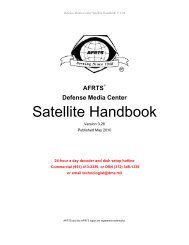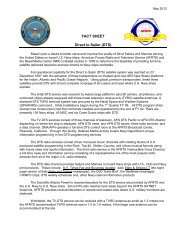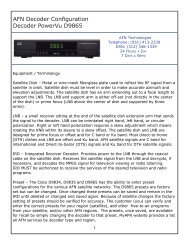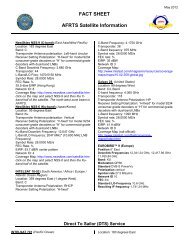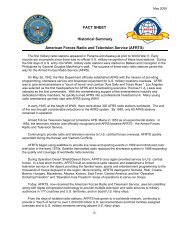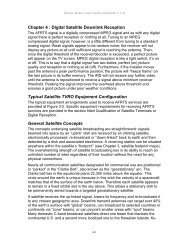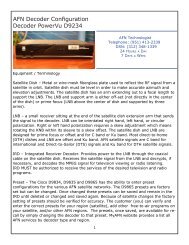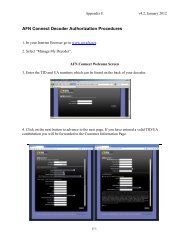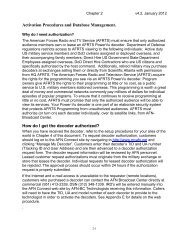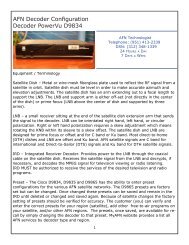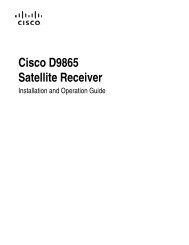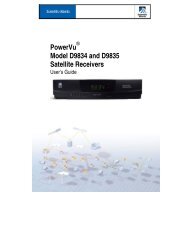AFRTS Defense Media Center Satellite Handbook
AFRTS Defense Media Center Satellite Handbook
AFRTS Defense Media Center Satellite Handbook
You also want an ePaper? Increase the reach of your titles
YUMPU automatically turns print PDFs into web optimized ePapers that Google loves.
<strong>Defense</strong> <strong>Media</strong> <strong>Center</strong> <strong>Satellite</strong> <strong>Handbook</strong> V.3.26<br />
and a signal rotating in the left-hand direction is termed left-hand circular<br />
polarization (LHCP).<br />
A principle advantage of<br />
circular polarization is the<br />
elimination of the need for<br />
skew adjustment. A feed<br />
designed to receive a linearly<br />
polarized signal must be<br />
correctly lined up with its plane<br />
of polarization to allow<br />
reception of the highest<br />
possible power and therefore<br />
clearest picture. It requires a<br />
skew adjustment for finetuning.<br />
However, a feed that<br />
receives a RHCP or LHCP<br />
Figure 4-1 <strong>Satellite</strong> dish parts<br />
signal can be attached at the<br />
focal point of the dish in any<br />
orientation.<br />
There are three noteworthy components of a satellite receive antenna which<br />
collectively capture and amplify the signal to a level large enough to break the<br />
receiver reception threshold, normally around negative 45dB. These are the<br />
reflective surface or parabolic curvature, the feedhorn and the amplifier section<br />
“Low Noise Amplifier (LNA), Low Noise Block converter (LNB), Low Noise<br />
Converter (LNC), and Low Noise Feedhorn (LNF). We will focus on these areas<br />
because they are the components that we personally come in contact with and<br />
have the greatest control over.<br />
Antenna Reflector<br />
The reflective surface in a perfect world would rely on the geometric properties of<br />
its true parabolic curve to reflect the satellite signal to a very sharp focal point.<br />
The focal point on a parabolic antenna is out in front and to the center of the<br />
surface. This would be a well-defined area if a perfect parabolic curve were<br />
defined, however this isn’t as defined as we would prefer. The focal point is not<br />
as perfect as theory would dictate but is still within a small radius and is a<br />
defining difference in a perfect or marginal signal reception. This you may say is<br />
where the “rubber meets the road” and collection of the signal is critical in this<br />
area.<br />
4-3



